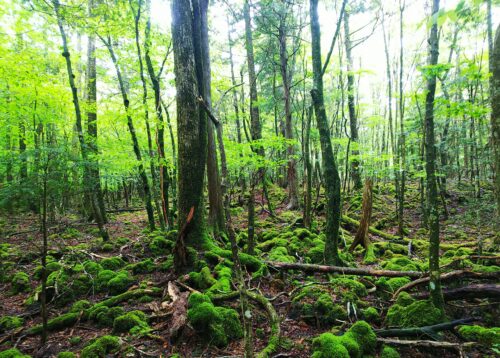2022– date –
-

The Deadly Delicacy: Why Mochi is Japan’s Most Dangerous Food (and a Year-End Ritual)
Why is Mochi (rice cake), which causes 40% of all choking deaths in January, not banned in Japan? I suggest even those in power are captives of this deadly delicacy. I explore Mochi-tsuki as a lost year-end ritual requiring immense effort and communal unity. I reveal a non-psychological difference: commercial mochi is often made from flour, unlike the superior fresh-pounded version. Finally, I connect mochi's famous stickiness to traditional craft: rice paste was once the ideal glue for wooden furniture. -

Why Nature Loves Hexagons: The Geometry of Efficiency (And Why I’m Terrified of Emotional Aging)
If you stop being curious, you will emotionally crumble. My blog is my anti-aging strategy, leading me to the genius of the hexagon. Why do bees choose it? It's the contact point theory that proves its work efficiency. Even the Japanese word for snowflakes, Rokka, means "hexagonal flower." -

How Factory Tours Can Spark Students’ Interest in Japan
Do you notice anything peculiar in the above image of the big forest at the bottom of Mt. Fuji? It's moss. You can see a lot of moss on the ground. It grows on the surface of tree roots crawling on the ground. The forest soil is made of lava. The lava soil is so hard and well-drained that trees can't collect and keep water from their roots without moss. -

Visiting Japan’s Planetariums: A Guide for Beginners
Do you know how big the world's largest planetarium is? It's 35 m in diameter, and is located in Nagoya, Japan. Why don't you come and try one in the Mecca of planetarium? You may think there's no point of going to the planetarium when you come all the way to Japan, but planetarium shows are designed based on stars seen in the local sky. It's also something you can only experience here. -

Why We Donate Our Waste Leather
One day, I found an interesting article about a facility to support people with disabilities. The facility staff learned many waste clothes were produced from hemming up pants in UNIQLO, and asked to hand over the waste clothes. Wonderfully enough, UNIQLO kindly agreed. -

The Powder Paradox: Why Hokkaido’s ‘Good’ Snow Ruins Childhood Games (and Creates Stunning Ice Hotels)
The $500 Japanese Ransel school bag was built to be a six-year sled. We unveil the Powder Paradox: Hokkaido’s globally famous 'Champagne Powder' is too light and dry to build snow igloos—ruining childhood fun, but creating the need for stunning, heavy-machinery-built structures like the La Vista Ice Bar. Sit on our chairs in a hotel made of ice and experience the ultimate expression of our fleeting, cold luxury. -

The Ultimate Efficiency: Why Our Ancestors Chose Rice (and Hokkaido’s Cold Rice Test)
The Cold Rice Test: Why Your Microwave Is Useless. Truly exceptional rice remains delicious even when cooled—a cultural point missed by the microwave generation. We explore the brutal efficiency that made rice, not wheat, the cornerstone of Japan, sustained by 400,000 km of ancestral labor (ten turns around the Earth). This profound history culminates in a farmer-run curry house where a simple meal becomes a 10,000-year philosophical experience. -

Are NFTs Just Hype or a Real Investment?
Academically, the value of things is composed of three factors: rarity, utility, and timeliness. Let's put aside timeliness here because things get too complex. First of all, diamonds are no longer so useful at least in industrial activities because we can artificially make them. Let's rule out utility. Next, what about rarity? Do you still believe diamonds are rare? -

Why Hokkaido’s Bread Is a Must-Try for Every Food Lover
If you wanna eat the best bread in Japan, you need to come to Hokkaido because it is the kingdom of the agricultural (wheat) and dairy (milk) industries in Japan. There are many well-known bakeries, and one of the major groups is bakeries opened by bakers breaking away from Maison Kayser. -

How to Deal with Methane Emissions from Dairy Cows
Hokkaido is sometimes called the milk kingdom that boasts the largest milk production (about 55% of the total milk production in Japan). Only a short drive takes you to the road where dairy farms spread on both sides anywhere in Hokkaido. Every time I see cows lazily munching, an environmental issue occurs to my mind, which is methane gas produced from cow belching and manure.
